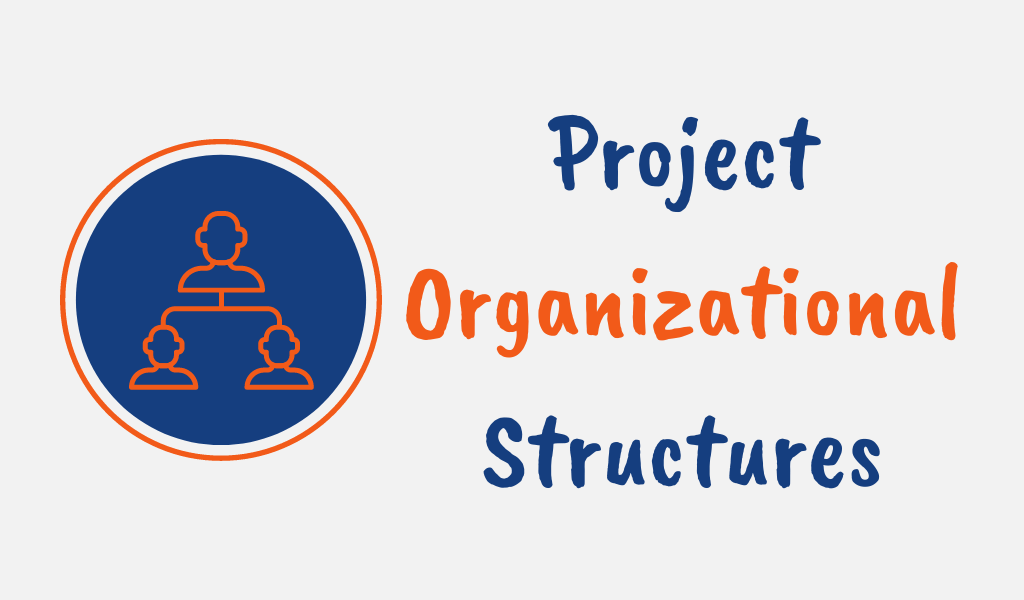For a company, choosing the right organizational structure is crucial for project success. And for a project manager, the organizational structure of the company you are working with largely determines your authority and how you manage projects.
Most companies use either a functional, matrix, or projectized organizational structure. Each has strengths and weaknesses depending on factors like company size, industry, and objectives.
In this guide, we’ll compare functional vs matrix vs projectized organizations to understand the key distinctions, pros and cons, and real-world applications of each structure.
Understanding these core models allows leaders to select the structure best aligned to their business needs and project environment.
If you are preparing for the PMP exam, you must have a good understanding of the types of organizational structures and how they affect project management as you can expect some questions from this topic.
Types of Project Organizational Structure
The organizational structure defines how a company arranges its staff to achieve its objectives.
It establishes lines of authority and communication, allocates resources, and affects many aspects of business operations, including workflow, resource utilization, and project outcomes.
There are 3 types of organizational structures that companies generally adopt. These are functional, matrix, or projectized organizational structures which are explained in-depth in this article.
As earlier iterated, there is no one-size-fits-all approach and each of these structures has its advantages and disadvantages depending on the company size, industry, and strategic goals.
How Does a Company’s Organizational Structure Impact Project Management?
An organization’s structure directly impacts project success in a ton of ways. It determines:
- How project resources are allocated
- The level of authority granted to project managers
- Efficiency of decision-making and governance
- Collaboration and information flow
- Project budget oversight and spending

Functional Organizational Structure
In a functional organization, the company is divided into different functional areas, such as IT, finance, marketing, sales, HR, etc.
It has tall hierarchies with narrow spans of control and communication moves vertically within siloed units.
Each department works independently and is led by a department manager who reports to the top management.
In this type of setup, projects are usually managed within the functional unit and project resources are likely to report to their functional manager who has the highest authority and decision-making power.
This structure is common in organizations where projects often serve the ongoing operations of the company
Functional structures promote specialization as employees build expertise in their field by repeating similar tasks with their focus aligned with their department’s singular purpose.
For organizations operating a functional structure, project managers have limited authority and cannot dictate resource usage across functions. This role is sometimes fulfilled by a project coordinator or expeditor.
When to Use Functional Organizational Structure
Functional organizations leverage skill specialization and consistency and suit simple, stable environments focused on core competencies. Industries like manufacturing and insurance often use functional structures.
Here are some specific situations where functional organizational models thrive:
- Organizations with little change in offerings or processes
- Mature industries with established practices
- Companies focused on efficiency and core expertise
- Businesses with single or low variety products
- Environments with low innovation and simple operations
Advantages and Disadvantages of Functional Organizational Structures
Functional organizations have these key advantages:
- Promotes skill development within functions
- Achieves efficiencies from repetitive work
- Clear structure with a single chain of command
- Simpler coordination within functions
- Functional managers control resources and budgets
Conversely, functional models present these disadvantages:
- Communication limited across functional silos
- Delayed responses to change
- Limited collaboration across departments
- Resource duplication across units
- Constrained overview of organizational objectives
- Project managers have little to no real authority

Projectized Organizational Structure
In a projectized organization, the organization is structured around projects. That means the team is assembled to complete a project.
In projectized models, the project manager has complete authority over the project. They make resource allocation decisions and manage the budget while the project team focuses solely on their project with no competing priorities.
Once projects end, resources are reassigned to new teams. Projectized organizations maintain a small support staff to handle functions like legal, HR, and facilities. However, most employees are dedicated to project work.
Communication flows horizontally between team members, with the project manager as the hub. Vertical hierarchies are flat, with just project sponsors or executives above the project manager.
This structure is common in consultancies, construction, and other fields where a team comes together to accomplish a defined project and then moves on to different projects.
When to Use Projectized Organizational Structure
Projectized organizations suit environments focused on projects versus core operations. Industries like construction, consulting, and software development commonly use projectized approaches.
Specific situations where projectized models excel include:
- Organizations with primarily project-based work
- Businesses that change objectives frequently
- Short-term projects with a defined lifespan
- Environments with many unique deliverables
- Companies requiring cross-functional collaboration
Advantages and Disadvantages of Projectized Organizational Structure
Projectized organizations have these key advantages:
- Strong alignment and focus on project objectives
- Project managers have significant authority over resources
- Adaptable to changing priorities
- Facilitates cross-functional collaboration
- Resources 100% dedicated to projects
On the other hand, projectized models have the following drawbacks:
- Higher resource costs from dedicated staff
- Resource redundancies across projects
- Lack of long-term career development
- Little skill specialization
- Loss of knowledge when the project concludes
- Need some non-projectized support functions

Matrix Organizational Structure
The matrix structure is a blend of functional and projectized structures. In a matrix organization, team members report to both a functional manager and one or more project managers.
Communication flows vertically and horizontally in this organizational structure as employees collaborate and share knowledge across functions and teams.
Since the team members basically report to more than 1 manager, the amount of authority divided between the two managers defines the type of matrix.
There are 3 types of matrix organizational structures:
- Weak Matrix: The functional manager has the prime authority
- Balanced Matrix: The authority shared equally
- Strong Matrix: The project manager has the prime authority
The weak matrix resembles functional structures where project managers act as coordinators with limited power while the strong matrix has features of projectized models with empowered project managers.
When to Use Matrix Organizational Structure
Matrix organizations provide flexibility, enabling companies to shift resources as needs evolve. Tech, construction, and professional services commonly use matrix approaches.
Specific situations where a matrix structure may be best include:
- Organizations requiring cross-functional collaboration
- Businesses needing to quickly reprioritize resources
- Large or complex projects requiring multiple skillsets
- Companies with high volumes of varied projects
- Dynamic industries needing responsiveness to change
Advantages and Disadvantages of Matrix Organizations
Here are some key advantages of matrix organizations:
- Flexibility to deploy resources across functions and projects
- Ability to prioritize needs and share talent
- Promotes cross-functional communication and collaboration
- Project-specific focus while maintaining functional skills
Conversely, here are some drawbacks of matrix organizational structures:
- Complex dual reporting relationships
- Role confusion from multiple managers
- Power struggles between functional and project managers
- Resource conflict across departments and projects
- Lack of ownership and accountability

Functional vs Matrix vs Projectized Organizations: Feature Comparison
Now you have a deeper understanding of the 3 types of organizational structures in project management, let’s do a head-to-head comparison to highlight the key differences between them:
| Aspect | Functional Organizational Structure | Projectized Organizational Structure | Matrix Organizational Structure |
| Definition | An organization where staff are grouped by areas of specialization and managed by a person with expertise in that area. | An organization where teams are formed to achieve specific projects and are led by a project manager. | An organization that combines aspects of both functional and projectized structures. Team members report to both a functional manager and one or more project managers. |
| Project Manager Authority | Low – the functional manager has more authority. | High – the project manager has full authority over the project. | Shared – the project manager shares authority with functional managers |
| Resource Allocation | Resources are controlled by functional managers and are assigned to projects as needed. | Resources are dedicated to specific projects. | Resources are shared across both projects and functional work. |
| Communication | Communication mainly happens within the same functional area. | Communication is project-focused and happens across the organization. | Communication happens both within functional areas and across projects. |
| Project Management Emphasis | Low – the focus is more on functional work and less on projects. | High – the entire organization is focused on projects. | Medium – project management is important, but so is ongoing functional work. |
| Key Advantages | Clear career paths within functions, in-depth expertise development. | Clear authority and responsibility, fast decision-making, and high emphasis on the project. | Flexibility in the use of resources, efficient information exchange, and balanced focus between functional work and projects. |
| Key Disadvantages | Can lead to inefficient use of resources due to duplication across units. | Can lead to inefficient use of resources, and a lack of functional home for team members once the project ends. | Can lead to confusion and conflict, complexity in resource allocation and management. |
What Should be Considered When Choosing a Type of Project Organization?
For a company or business, selecting an organizational structure involves weighing many complex factors as there is no ideal model for every company. Leaders must align the structure to the business context and strategic goals.
There are key factors to consider and these include:
- Company Size: Small firms can use functional models, while large enterprises typically need matrix or projectized approaches.
- Project Diversity: A greater variety of projects benefits from projectized or matrix structures.
- Industry Characteristics: Dynamic industries like tech prefer projectized and matrix approaches, while stable industries like manufacturing favor functional.
- Business Objectives: Firms focused on efficiency may choose functional, while those emphasizing innovation need projectized or matrix.
- Resource Flexibility: Projectized and matrix models allow resources to be deployed rapidly.
- Life Cycle Needs: Functional structures work for steady-state operations, while projectized structures suit defined project lifecycles.
- Interdependencies: Matrix models allow managing dependencies between functions and projects.
- Project Manager Authority: Projectized and strong matrix organizational structures provide the most empowered project managers.
Implementing Organizational Change
Transitioning from one organizational structure to another is a major undertaking. Therefore, leaders must carefully plan and manage the change to minimize disruption.
Some of the key challenges when changing organizational structures include:
- Employee Resistance: Staff may resist new reporting relationships, responsibilities, or power dynamics.
- Leadership Alignment: Executives and managers must fully support the changes for success.
- Process Disruption: Existing workflows may break before new processes are established.
- Resource Confusion: Staff may be unsure where to focus efforts with new priorities.
- Power Vacuums: New decision-making authority may be unclear at first.
Change Management Best Practices
With careful preparation, communication, and support, companies can implement major organizational restructuring with less disruption and better results.
To promote an orderly, sustainable transition, follow these change management best practices:
- Communicate Early and Often: Transparent communication helps to reduce uncertainty.
- Provide Training: Equip employees with skills for the new structure and processes.
- Define Roles and Responsibilities: Document exactly who makes which decisions in the new model.
- Phase Rollout: Transition functions one at a time rather than all at once.
- Celebrate Wins: Recognize successful adaptations to reinforce the change.
Key Takeaways
The organizational structure has profound impacts on project execution and business performance. Hence companies must align their structure with objectives, industry demands, stage of maturity, and overall corporate strategy.
While functional organizations promote specialized expertise and operational stability, projectized models allow flexibility and cross-functional teamwork, and matrix structures balance functional depth and project responsiveness.
Organizational leaders must analyze their context and select the model that best fits company size, project diversity, rate of change, and strategic goals as no single structure works universally.
Adapting the organizational design over time is crucial as the business evolves. With these insights, companies can optimize organizational structure for enhancing project and operational success.
FAQs
How Does Organizational Structure Impact a Project Manager’s Authority?
The project manager’s authority varies significantly by structure. In functional organizations, project managers have little formal authority and serve more as coordinators.
Projectized and strong matrix structures empower project managers with greater authority over resources and decisions.
What is the Difference Between a Project Coordinator and a Project Manager?
A project coordinator has limited authority, focuses on communications and scheduling, and facilitates work without managing workflows or resources.
The project manager role has much broader responsibility for delivering project outcomes, including resource allocation, budgeting, risk management, and governance.
What is the Difference Between Weak Matrix and Strong Matrix Organizational Structure?
In weak matrix organizations, functional managers retain primary power over resources and project decisions. The project manager’s role is more administrative.
In strong matrix structures, project managers have greater authority to assign resources, make decisions, and manage the budget.
When is a Projectized Structure not Ideal?
Projectized structures work for project-driven businesses but become inefficient when projects end. The overhead of dedicated resources can become burdensome.
Companies with operations beyond projects may need functional or matrix structures to cover non-project work.
What Causes Role Confusion in a Matrix Structure?
Matrix organizations can experience role confusion because resources report to both functional and project managers.
Lack of clarity on priorities and decision rights between these dual managers will cause responsibility confusion, hence defining locus of authority and consistent communication are key.
What Differentiates a Weak Matrix Project Management Structure From a Functional Project Management Structure?
In a weak matrix structure, project managers have limited authority and the functional manager still retains control. In a functional structure, there are no dedicated project managers, and projects are managed within functional silos.
The key difference is the weak matrix has project managers, but they have less power compared to functional managers.
What Differentiates a Strong Matrix Project Management Structure From a Functional Project Management Structure?
In a strong matrix structure, project managers have more authority compared to functional managers. Project managers can make most day-to-day decisions for the project without relying on functional managers.
In a functional structure, there are no dedicated project managers. All decisions and management happen within isolated functional groups.
The key difference is the strong matrix balances power between project and functional managers while the functional structure has no project management.
Which Project Organization Structure Uses Team Members Who are Assigned From the Functional Units and Has a Dedicated Project Manager?
The matrix project organization structure uses team members who are assigned from functional units and has a dedicated project manager.
In a matrix structure, employees have dual reporting relationships – to both their functional manager and the project manager.





